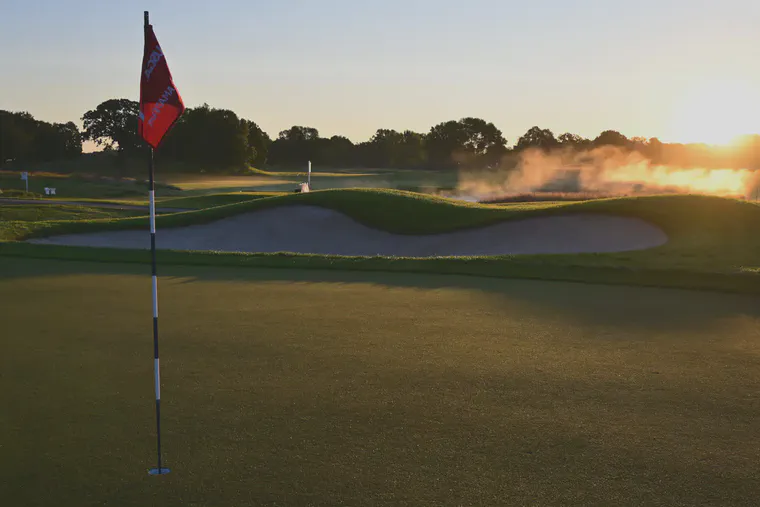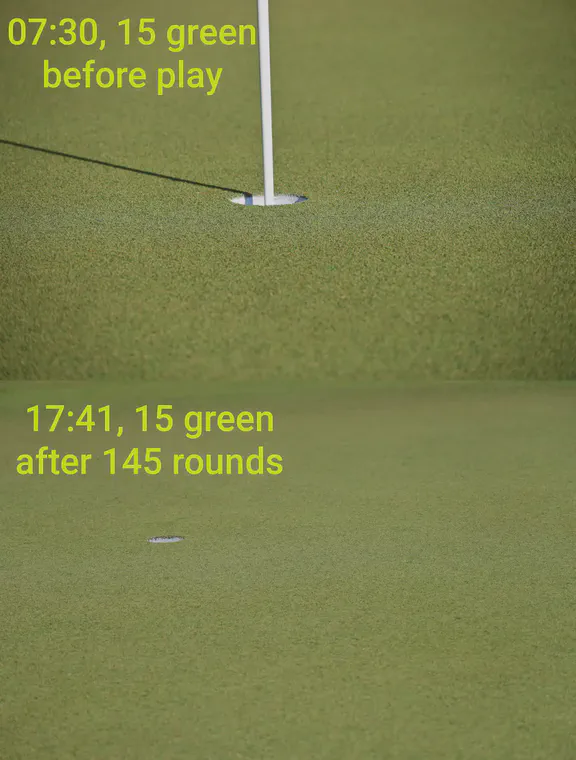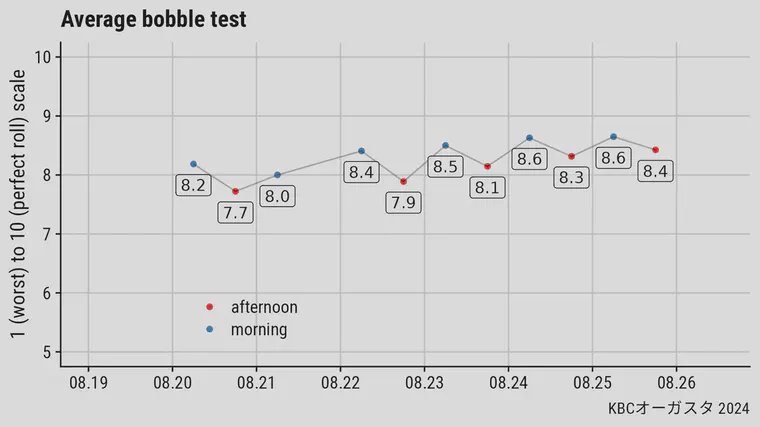Two weeks in August
I worked at golf tournaments in consecutive weeks, first at Hazeltine National Golf Club during the U.S. Amateur Championship, and then flew to Japan to work at Keya Golf Club for the KBC Augusta Tournament. If you’d like to see some photo galleries from my camera from these tournaments, scroll to the end and have a look at the embedded Instagram photo galleries.

What I’d like to highlight here is the excellent results that were achieved at both these courses. Regular readers of this blog, and those who listen to some of my podcasts, will be well aware that both Keya GC and Hazeltine National GC have done soil testing with ATC for many years, so we have a steady record of nutrient and total organic material changes in the soil. Both are also PACE Turf members, so they get weekly updates from me, plus have access to their site-specific weather data and climate analyses. And Andrew McDaniel from Keya and Chris Tritabaugh from Hazeltine both make routine measurements of clipping volume, which allows them to know exactly how much the grass is growing. Combine that with the belowground growth data that they get from OM246 tests, and it’s not a surprise that the results are so good, and so predictable.
I’d also like to point out that the conditions at both properties are quantitatively better than they were some years ago. For example, at the first three KBC Augusta Tournaments Andrew and I worked together, from 2013 to 2015, the average firmness (Gmax measured by the Clegg) never exceeded 95 for the week. In 2024, the average was 104. That’s with overhead irrigation on the greens almost every night during the tournament, plus supplemental hand-watering.
I attribute the improved conditions to a lot of careful work by the maintenance teams, and also to application of the grammar of greenkeeping. This is a simple approach to greenkeeping that I write about here and provide advice about through PACE Turf.

One of the things I like to check during tournaments is the bobble test before and after play. Although korai greens, because of their rigid leaves, don’t get as fast or as smooth as bentgrass or bermudagrass greens that receive the same maintenance work, one good thing about intensively maintained korai is the durability of the surface through the day.

The declines of 0.5, 0.4, 0.3, and 0.2 on the four tournament rounds correspond to two out of three rolls having the same smoothness and trueness at the end of the round as they did before the round. With bentgrass greens, for a full field event, the drop is often around 1 point, and can be even higher around the hole. On soft greens, the roll drops even more than that.
These conditions aren’t produced at the expense of vigorous plants. We made a point of looking at the roots at both courses, and these videos show what we found.
The predictably excellent conditions being produced by turf managers around the world is so impressive. And there are a lot of ways to get good results.
I like to use the grammar of greenkeeping, because I find this system is fun, for one. I’m not sure why, but keeping track of a few metrics and adjusting the work seems to make the work a little more enjoyable. Second, this is a logical approach. Everything done to the turf has a reason. Third, it works remarkably well.
If you, like me, enjoy this type of approach to greenkeeping, then I trust you will enjoy knowing that the conditions I saw, walked on, photographed, experienced, and measured for two weeks in August were superb. If you are using the same techniques, then you are probably seeing similar results. If you haven’t tried this yet, here and PACE Turf are the place to find out how to do it.
Photo galleries from Instagram are embedded below.